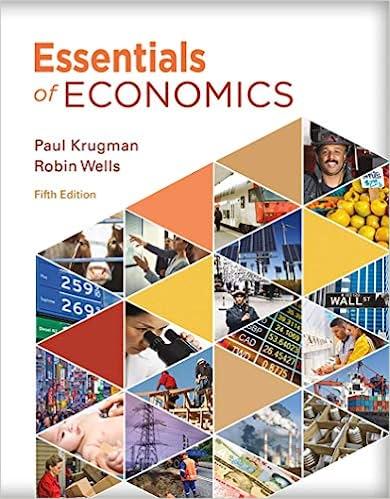The federal Energy Information Administration estimates that nearly 95% of all new power capacity installed in the
Question:
The federal Energy Information Administration estimates that nearly 95% of all new power capacity installed in the United States in 2017 came from renewables. These are natural resources that are not depleted upon use, making them inexhaustible. Solar and wind power are two examples. But in 2017, long-standing federal subsidies for renewable energy were at risk as Congress debated whether to cut them.
Historically, renewables have been more expensive than fossil fuel, and subsidies have been critical in bringing cost down to consumers. However, fossil fuel industry backers claim that the cost of renewables have fallen so low that the subsidies to renewables unfairly undercut them.
Will the threat to end subsidies stall the meteoric rise of renewable energy, and lead the economy to return to fossil fuel sources?
Benjamin Fowke, the CEO of Xcel Energy, thinks not and is undeterred. Trained in finance and accounting, it’s safe to say that he is no starry-eyed dreamer. Xcel Energy has announced that across its eight-state system, 60% of its energy will be generated by renewables, and its carbon emissions will be reduced by 80% by 2030.
Fowke is positioning Xcel Energy to take advantage of the “learning curve” associated with the cost of renewable energy. Learning curve is the term used to describe the dramatic fall in costs that is often achieved after a new technology is introduced—adoption of the new technology spreads because scientists, innovators, and manufacturers get better at exploiting it. A “virtuous cycle” is generated as costs fall and adoption of the new technology increases, spurring further investment and additional reductions in costs.
An example is solar energy: the price to consumers of a watt of solar energy has dropped by nearly 88% since 1998. The learning curve has been steepest in the last decade, with solar prices dropping by 70%. In the case of wind energy, prices have dropped 90% since 1980.
According to Fowke, it is now cheaper to build new wind turbines than to operate its lowest cost existing coal plants. For example, in 2017 Xcel purchased wind energy at a cost of $15 to
$20 per megawatt-hour, compared to $25 to $35 for natural-gas-generated power, the main energy source competing with renewables.
Unsurprisingly, competition with conventional fossil fuel producers encourages the solar and wind industries, along with producers of other renewables, to keep improving their product and prices to stay ahead of the competition.
Questions:-
1. Explain how subsidies affect the future adoption of a new technology that is subject to steep learning curve effects. Relate this to the role of government intervention when externalities are present.
2. Is Fowke right or wrong to persist in the adoption of renewables when federal subsidies are under threat? Analyze the investment decision that a CEO like Fowke must make when deciding whether and when to invest more capacity in renewables instead of in fossil fuel sources.
3. How does this case illustrate the way in which business and government can work together in a market economy?
Step by Step Answer:






